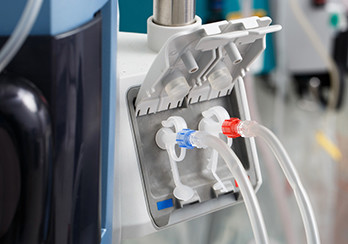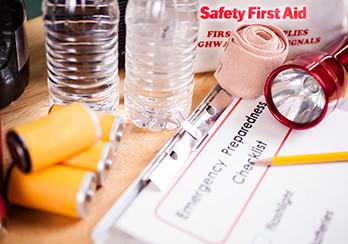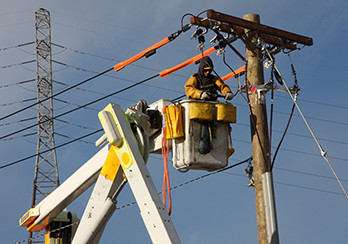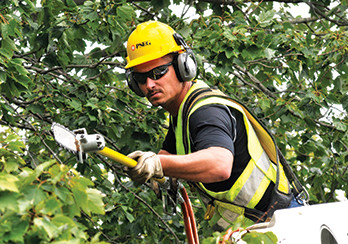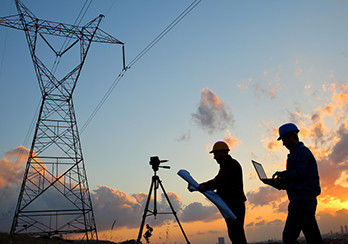Before a Storm
Preparing for a Weather Event
Stay connected. Be prepared. When severe weather is predicted, PSE&G recommends planning ahead in case the power goes out.
Protect Your Family and Your Home
Create an Emergency Kit
- Get a battery-powered radio, alarm clock, flashlights and extra batteries.
- Stock up on bottled water and nonperishable food.
- Charge your power backups, cell phones and other electronic devices.
- Include a hand-operated can opener.
- Build a first aid kit (Visit the American Red Cross for ideas on what to include in a basic kit.)
- In the winter, keep a pile of blankets handy. If your home has a fireplace, clean the chimney of debris and stock some firewood.
- Plan where and how you would evacuate.
Prepare for Power Outages
- Charge your phones, tablets, power backups and other mobile devices.
- If you have a landline, ensure you have a corded phone. Cordless phones don’t work when the power is out.
- If your mobile phone service provides a “hotspot” for areas without internet access, learn how to use it
- Know how to open your garage door without electricity.
- Know how to reset your home’s security system when power returns.
Prepare for Wind or Flooding
- Secure outside objects like garbage cans and patio furniture.
- Turn off power to natural gas appliances, and shut off natural gas supply valves.
- If you must evacuate, shut off the gas valve at the meter before you leave.
- Cap the open end of appliances to prevent floodwaters from entering the gas piping system
Prepare Your Business
Weather emergencies don’t always give us a heads up. Plan ahead for emergencies to reduce stress when bad weather strikes.
For Your Business and Employees
Develop a communications plan before severe weather hits:
- Update all employee contact information.
- Locate and post evacuation routes closest to your business.
- Create a communications tree to stay in touch with your employees before, during, and after a serious storm.
- Develop a phone, text, or email chain to check in with employees after an evacuation.
- Designate someone to contact employees’ family and friends in case you can't contact your employees directly.
- Establish pre-arranged meeting points if cell/phone communication is cut off.
Protect Your Assets
To minimize damage:
- Check for and repair loose roofing and siding.
- Trim dead or broken branches from trees and shrubbery near your building.
- Move equipment away from windows.
- Unplug electronics to protect from destructive power surges.
- Create or update your disaster supplies kit; consider purchasing a battery-powered radio or National Weather Service weather alert radio.
- Evaluate the practicality of installing a standby emergency generator. If you have one already, test it and stock up on fuel.
Preparing for the Worst
To help your business resume normal operations, create a business continuity plan to minimize disruption. You may also want to:
- Review insurance policies and consider adding business interruption insurance or flood insurance.
- Take photos or video of property and equipment.
- Back up important data to the cloud or external drives; store important papers in a fireproof safe within your building.
- Prepare a list of disaster recovery services vendors relevant to your needs.
Only return to your business after it’s safe to resume travel.
Minimizing Damage From Severe Weather
PSE&G prepares for strong storms long before they are predicted.
PSE&G: Storm Ready
Since we often know about severe weather in advance, we’ve developed a solid plan to prepare for damaging storms and respond to widespread power outages.
Before a predicted storm arrives, we:
- Activate more personnel to handle increased demand on our resources.
- Add contractors, including tree crews to supplement our workforce.
- Increase our supplies including poles, transformers, and pole-top equipment.
- Verify that our fleet of trucks is fueled and ready to go.
- Test back-up generators at utility locations.
- Identify locations, like substations, prone to flooding and use sandbags to redirect storm water and debris.
- Update county Offices of Emergency Management (OEMs) on outages and restoration efforts.
- Coordinate with critical customers, including hospitals and airports.
- Communicate frequently with customers with status updates.
- If the Regional Operations and Intelligence Center (ROIC) is activated by the NJ State Police/Office of Emergency Management, we will partner with other utilities and state agencies to coordinate preparation, response, and recovery from various disaster situations.






















